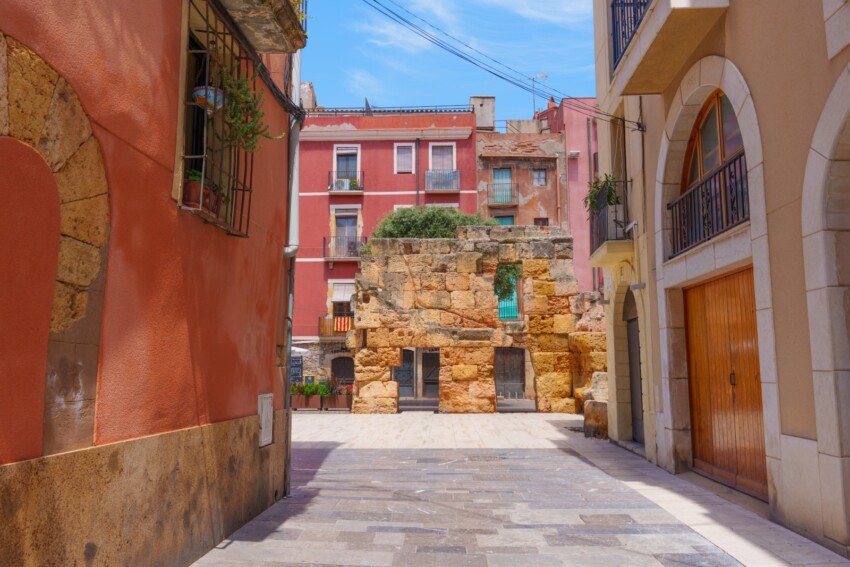

Located on the Costa Dorada, 100 km south of Barcelona, Tarragona is a city that holds one of Spain’s most important Roman heritages. Its mighty Roman walls rise majestically next to a picturesque medieval centre: the city, declared a UNESCO World Heritage Site, harmoniously blends its thousand-year-old past with a vibrant contemporary atmosphere.
The historical centre, known as Part Alta, tells two thousand years of history through its cobbled alleys and charming squares. Here, the remains of ancient Roman Tarraco intertwine with Gothic and modernist architecture, creating a unique open-air museum.
The city has a typical Spanish atmosphere, with narrow streets and alleys leading to beautiful squares filled with outdoor cafés and tapas bars. Tarragona is a great destination for a day trip from Barcelona, in case you don’t want to spend a day at one of the many beaches on the Costa Brava or Costa Daurada.
The places of interest in Tarragona are all located close together, so there is no need to use public transport once you get to the centre. The city can be visited perfectly well on foot and, of course, you can also spend a pleasant day in Tarragona by walking aimlessly through the streets of the old town full of shops or relaxing at a table in one of the many outdoor cafés people-watching, or swimming at one of the beaches near the city.
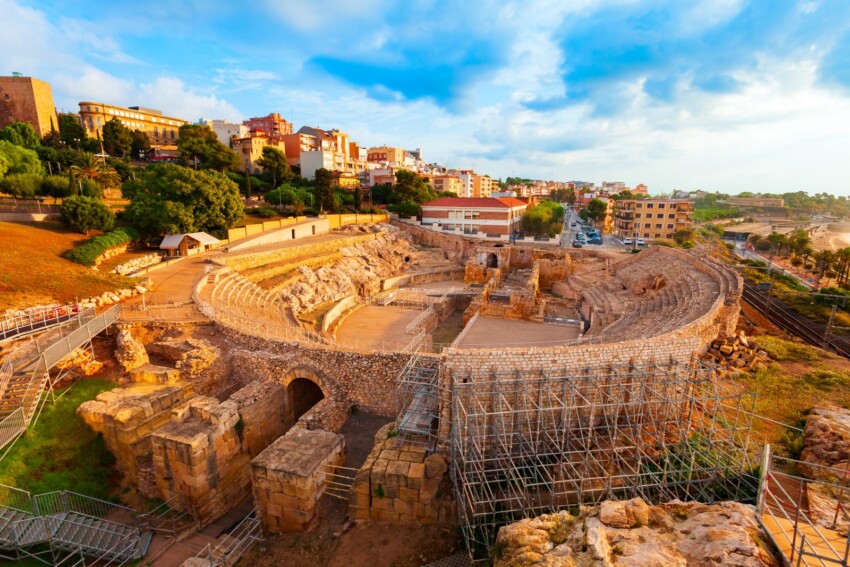
Tarragona’s Roman Amphitheatre is one of the city’s most impressive landmarks. Built in the 2nd century A.D., this majestic monument overlooks the Mediterranean Sea, creating a breathtaking setting that combines history and nature. The structure could accommodate up to 14,000 spectators and today you can still admire the remains of the original tiers of seats and the arena where the games were held.
The peculiarity of this amphitheatre is the presence of a Romanesque church built in the 12th century on its ruins, testimony to the historical stratification that characterises Tarragona. During the visit, detailed information panels illustrate the history of the monument and daily life in Roman times, allowing visitors to fully immerse themselves in the ancient atmosphere.
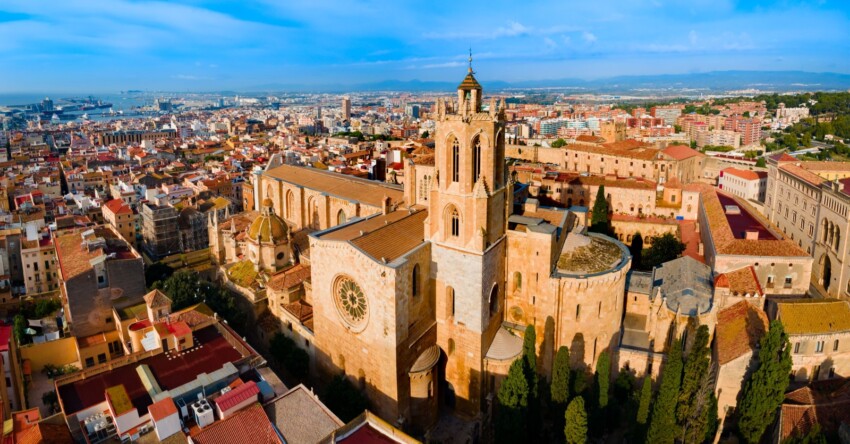
The Cathedral of Santa Maria, a jewel of Catalan Gothic architecture, dominates the highest point of the old city. Built between the 12th and 14th centuries, it features an imposing façade combining Romanesque and Gothic elements, with a magnificent central rose window illuminating the main nave.
The interior of the cathedral houses priceless artistic treasures, including the 14th-century marble main altarpiece and the striking Gothic cloister, where elegant arcades alternate with finely carved capitals telling biblical stories and scenes from medieval life. The diocesan museum, located in the chapter house, displays a rich collection of tapestries, sculptures and liturgical objects that testify to the diocese’s artistic richness through the centuries.
The Passeig Arqueològic is a scenic route that winds along the ancient Roman walls, offering one of the most impressive experiences in the city. This walk allows you to admire the most complete system of Roman fortifications preserved in Spain, with sections of the walls reaching up to 10 metres in height.
During the walk, you can observe the different construction techniques used over the centuries, from the mighty cyclopean stones to later medieval modifications. The route also offers beautiful views of the city and the sea, with strategic vantage points for memorable photographs. The gardens that line the route are dotted with Mediterranean plants and create a relaxing atmosphere perfect for a contemplative break.
Plaça de la Font is the beating heart of Tarragona’s social life. This rectangular square, surrounded by colourful modernist buildings, houses the city’s town hall and is the place where Tarragonians gather to celebrate traditional festivities and city events.
The square is enlivened by numerous bars and restaurants with outdoor tables, where you can enjoy local cuisine while watching people go by. During the summer, the square is transformed into a stage for shows and concerts, while in September it becomes the centre of the Santa Tecla celebrations, the city’s major festivity, with traditional performances by the ‘castells’ (Catalan human towers).
The Roman Circus of Tarragona is one of the best preserved of the Western Roman Empire. This impressive archaeological complex, which also includes the Praetorium, offers visitors the opportunity to explore the ancient underground structures and understand the organisation of chariot races in antiquity.
The Praetorium, a Roman tower standing on one end of the circus, now houses an interesting museum that tells the story of Tarraco through archaeological finds and multimedia reconstructions. From its terrace there is a spectacular panoramic view of the city and the port, making this a must-see for anyone who wants to understand the grandeur of the ancient Roman capital.
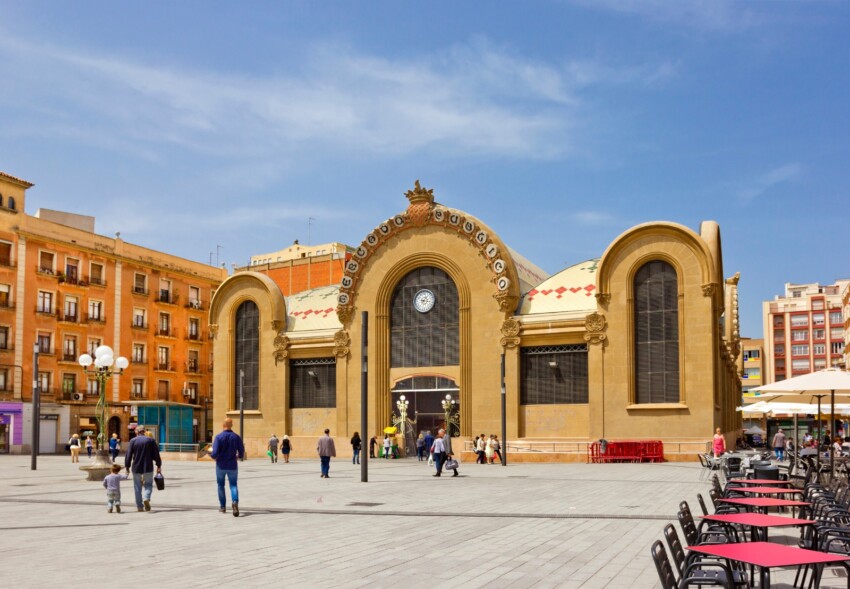
Tarragona’s Central Market is a modernist building from 1915 that houses one of the most authentic places to immerse yourself in the local gastronomic culture. The building itself is a remarkable example of iron and glass architecture, typical of the markets of the time.
Inside, more than 50 stalls offer a rich variety of local products: from freshly caught fish to garden vegetables, from artisanal cheeses to Catalan specialities. The market is also a great place to buy typical products to take home as souvenirs of your trip, or to take an authentic lunch break in one of the bars serving tapas and traditional dishes.
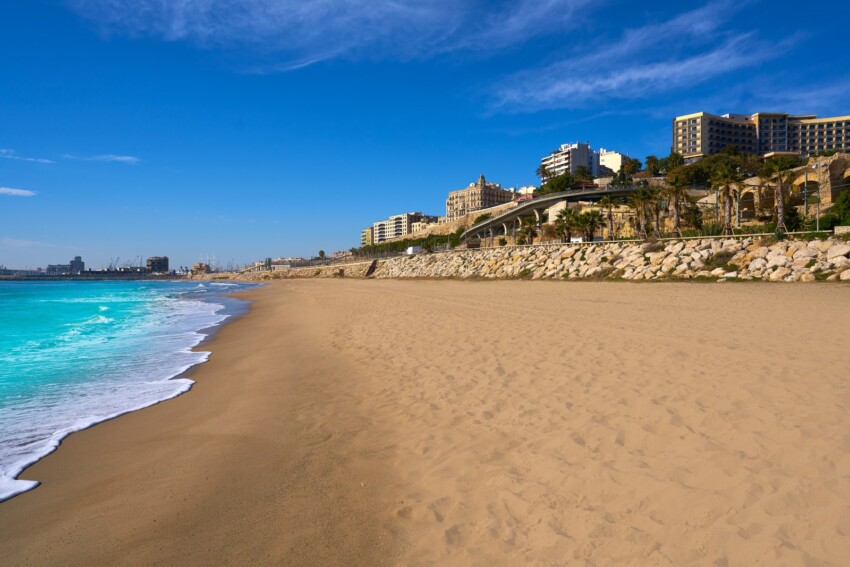
The Playa del Miracle is Tarragona’s urban beach par excellence, a wide expanse of golden sand over a kilometre long that stretches at the foot of the Roman amphitheatre. This unique location allows one to combine bathing relaxation with views of the city’s historical monuments.
The beach is equipped with all the necessary facilities for a comfortable day at the beach: showers, sunbeds and umbrellas for hire, children’s play areas and a promenade with bars and restaurants. The quality of the water and sand is certified by the Blue Flag, and the presence of lifeguards guarantees the safety of bathers during the summer season.
In the following map you can see the location of the main places of interest mentioned in this article.
There are many areas where to stay in Tarragona: you can choose, for example, the Part Alta, the old city centre, which revolves around the Cathedral and its square, to enjoy the atmosphere of yesteryear and zero traffic (with all its pros and cons, especially when it comes to finding parking for a rental car!).
For a more lively area by day and night, and with more amenities, choose an accommodation near the Rambla Nova, the main artery of modern Tarragona; finally, if you want to combine city life and the beach, move south, where across the harbour you will find La Pineda, with its beautiful equipped beach, or north, where you will find the wilder Platja Larga next to a series of small coves.
We offer a selection of hotels at Tarragona to suit all categories of travellers. The most booked by tourists are the sea-facing hotels, often right on the beach. If you want to play it safe, choose one of the following: they are among the most booked hotels in Tarragona, sorted by number of reviews.
If you prefer space, privacy and the ability to prepare your own meals to a hotel holiday, book a holiday home at Tarragona. We recommend a few below, but in this case we advise you to book early because houses and apartments for rent at Tarragona are in high demand.
To get to Tarragona, you might consider taking a flight to Reus airport, only to find that there is most likely no flight leaving your country. Therefore, this solution should only be considered if you live abroad, especially in the UK, where these connections are very frequent and extensive.
The best solution is to land in Barcelona and then continue by rental car or public transport, as we describe below. If, on the other hand, you are in other parts of Spain than Barcelona and would like to travel to Tarragona, we recommend using the Spanish high-speed AVE trains, which stop at the Estaciò del Camp de Tarragona, which is located well outside the city. Once you get off the train you will then have to continue your journey by bus or taxi.
The best way to get to Tarragona from Barcelona is undoubtedly by train. Tarragona’s central station is located on the seafront, on the other side of Platja del Miracle, which is easily reached from Barcelona’s Sants station by regional trains. The journey time is approximately one hour and 30 minutes.
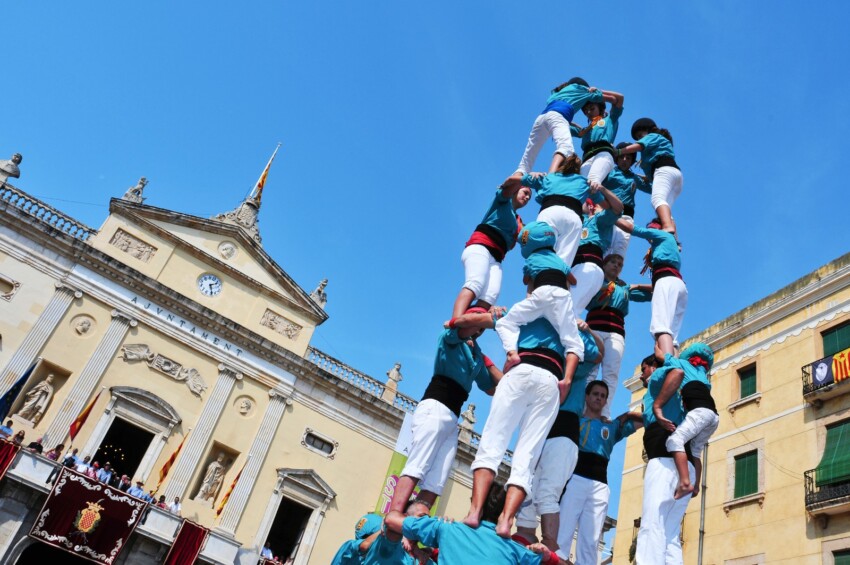
The Festival of Santa Tecla is the main event held in Tarragona. It is a traditional festival of national interest and its origins are lost in history. During the days of the festival there is a festive atmosphere in the city, with traditional Catalan dancing and singing and lots of people in the streets.
The surroundings of Tarragona offer numerous opportunities for interesting excursions, allowing you to discover the rich variety of the Catalan territory. Renting a car is recommended to freely explore the surrounding attractions, many of which are difficult to reach by public transport. The roads are well maintained and the signage is clear, making it easy to find your way around.
The Poblet Monastery, a UNESCO World Heritage Site, is one of the largest and best-preserved Cistercian monasteries in Europe. Located about 40 km from Tarragona, this 12th-century monastic complex is still inhabited by a community of monks and houses the royal tombs of the Crown of Aragon. The monastery’s Gothic architecture, silent cloisters and medieval gardens offer an experience of timeless peace and beauty.
The city of Reus, home of the famous architect Antoni Gaudí, is only 15 km from Tarragona. The historic centre is an open-air museum of modernist architecture, with spectacular buildings such as Casa Navàs and the Institut Pere Mata. The city is also famous for its production of vermouth and its modernist central market, one of the most beautiful in Catalonia.
The beaches of the Costa Daurada stretch for kilometres, offering secluded coves and long sandy shores. Altafulla, 12 km from Tarragona, has a medieval village overlooking the sea and a quiet beach ideal for families. The Torredembarra area, famous for Les Antines, a unique rock formation on the coast, offers some of the most crystal-clear waters in the region.
Sitges, about 45 km north of Tarragona, is one of Catalonia’s most charming coastal resorts. This modernist town is famous for its urban beaches, picturesque promenade and lively cultural life. The historical centre, with its white churches and period buildings, offers a unique bohemian atmosphere, while the numerous restaurants serve excellent Catalan cuisine.
What's the weather at Tarragona? Below are the temperatures and the weather forecast at Tarragona for the next few days.